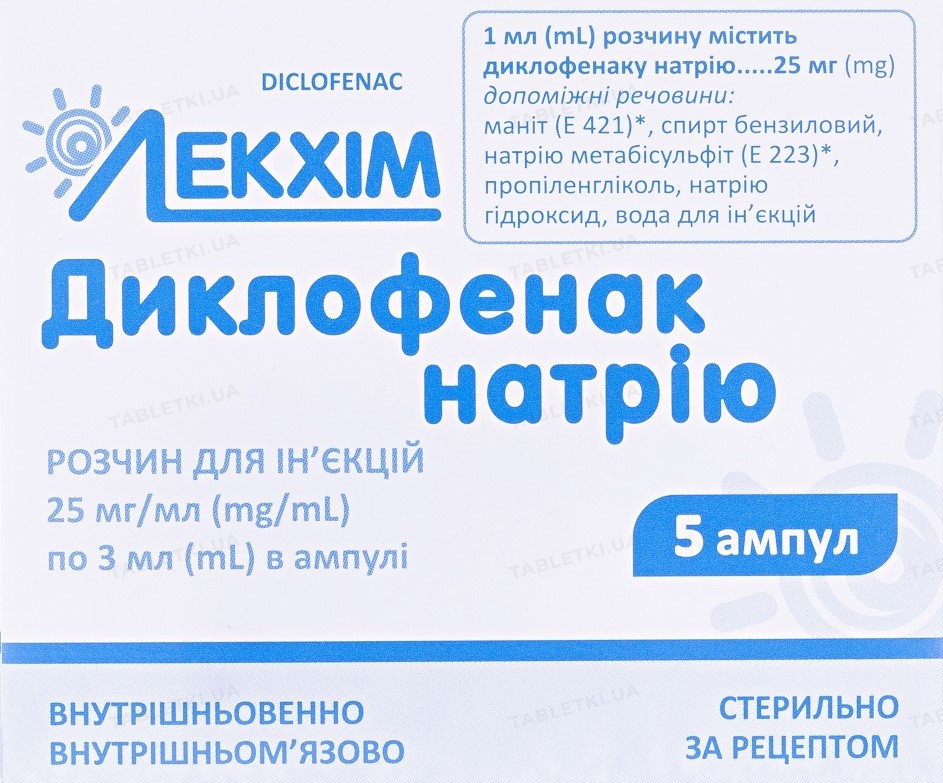
Diclofenac
General properties
Nonsteroidal anti-inflammatory and antirheumatic agents.Acetic acid derivatives and related compounds.
When injecting a drug intended for the treatment of:
- inflammatory and degenerative forms of rheumatism, rheumatoid arthritis, ankylosing spondylitis, osteoarthritis, spondylitis, vertebral pain, extra-articular rheumatism;
- acute attacks of gout;
- renal and hepatic colic;
- pain and swelling after injuries and operations;
- severe migraine attacks.
When administered as an intravenous infusion drug is intended for the treatment or prophylaxis of postoperative pain.
Known hypersensitivity to the active substance, sodium bisulfite or other components of the preparation. Bleeding or perforation, gastrointestinal history related to previous treatment with nonsteroidal anti-inflammatory drugs (NSAIDs).
The active form of peptic ulcer / bleeding or recurrent peptic ulcer / bleeding history (two or more distinct episodes of established ulceration or bleeding).
Ill trimester of pregnancy.
Like other NSAIDs, diclofenac is also contraindicated in patients in whom the use of ibuprofen, aspirin or other nonsteroidal anti-inflammatory drugs provoke attacks of asthma, angioedema, urticaria or acute rhinitis.
Inflammatory bowel disease (e.g. Crohn's disease or ulcerative colitis).
Liver failure.
Renal insufficiency.
Congestive heart failure (NYHAII-IV).
High risk of postoperative bleeding, no blood coagulation, hemostasis disorders, hematopoietic disorders or cerebrovascular bleeding.
Treatment of perioperative pain in coronary artery bypass grafting (or the use of heart-lung machine).
Coronary heart disease in patients with angina pectoris, myocardial infarction.
Cerebrovascular disease in patients who have had a stroke or have episodes of transient ischemic attacks. Peripheral Arterial Disease.
This dosage form of the drug is contraindicated in children.
For intravenous use only.
Concomitant use of NSAIDs or anticoagulants (including low-dose heparin).
In anamnesis: bleeding diathesis, confirmed or suspected cerebrovascular bleeding history.
The operations associated with high risk of bleeding.
Bronchial asthma in anamnesis.
Moderate or severe impairment of renal function (serum creatinine & gt; 160 micromoles / L).
Hypovolemia or dehydration from any cause.
Pharmaceutical characteristics
From colorless to slightly yellow solution.
Store in original packaging at a temperature not exceeding 25 °C. Keep out of the reach of children.
